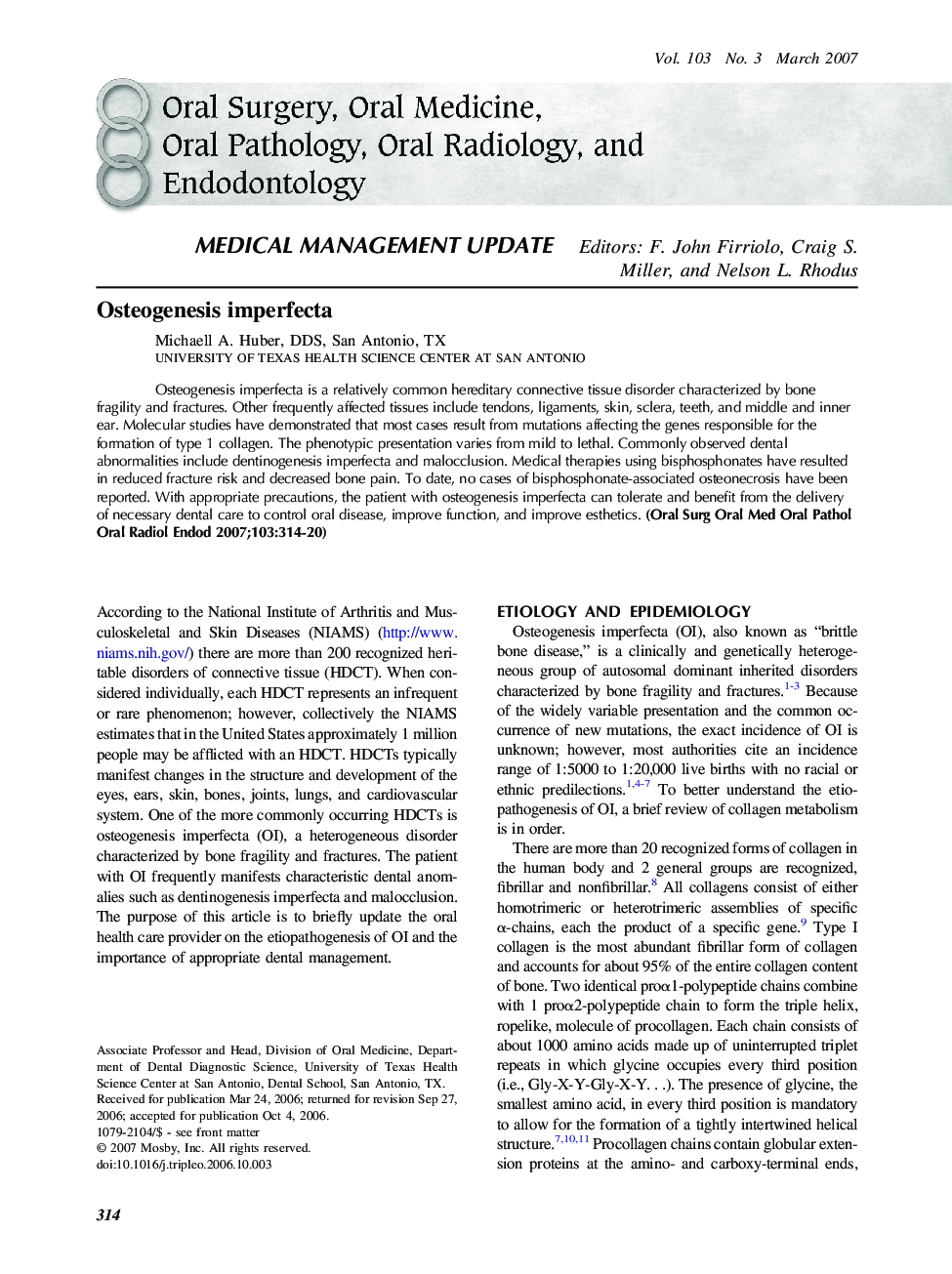| Article ID | Journal | Published Year | Pages | File Type |
|---|---|---|---|---|
| 3169511 | Oral Surgery, Oral Medicine, Oral Pathology, Oral Radiology, and Endodontology | 2007 | 7 Pages |
Osteogenesis imperfecta is a relatively common hereditary connective tissue disorder characterized by bone fragility and fractures. Other frequently affected tissues include tendons, ligaments, skin, sclera, teeth, and middle and inner ear. Molecular studies have demonstrated that most cases result from mutations affecting the genes responsible for the formation of type 1 collagen. The phenotypic presentation varies from mild to lethal. Commonly observed dental abnormalities include dentinogenesis imperfecta and malocclusion. Medical therapies using bisphosphonates have resulted in reduced fracture risk and decreased bone pain. To date, no cases of bisphosphonate-associated osteonecrosis have been reported. With appropriate precautions, the patient with osteogenesis imperfecta can tolerate and benefit from the delivery of necessary dental care to control oral disease, improve function, and improve esthetics.
